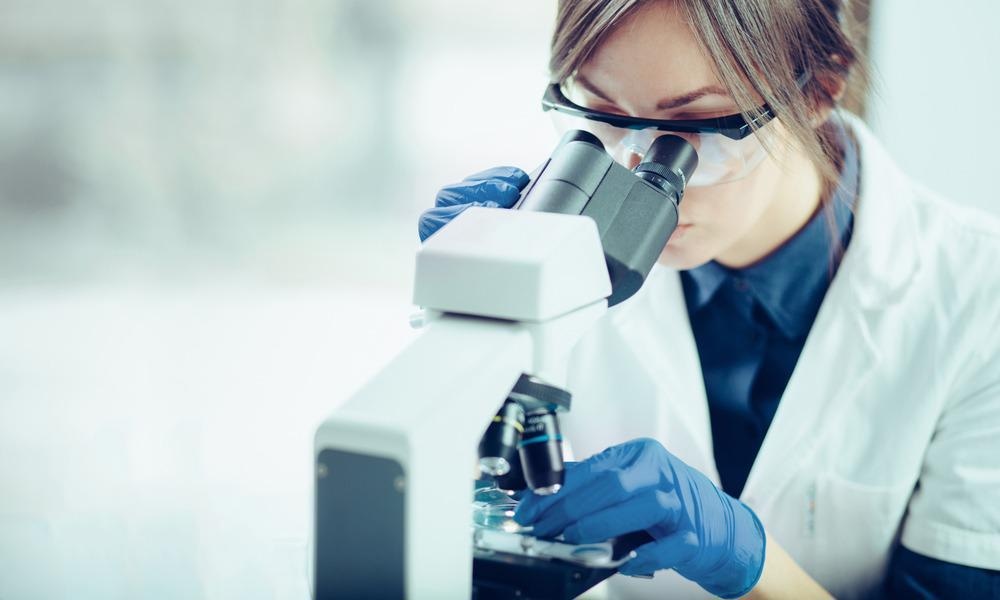
Image Credit: Likoper/Shutterstock.com
Optical microscopy is one of the most used methods for imaging and visualization of samples. Due to their numerous advantages, optical microscopes are used in many different fields, ranging from biology and medicine to forensic science.
Optical microscopes were designed in the 17th century and are the oldest design of a microscope. Historically, they were easy to develop because they use visible light and samples can be directly observed.
Optical microscopy is often a preferred imaging method in many areas of science since it is a long-established characterization technique. Optical microscopes also offer a relatively simple and inexpensive, non-destructive, and non-invasive way to investigate different types of samples.
Imaging Techniques Used in Forensic Science
Although forensic science is usually associated with law, it combines aspects from many branches of science and is often regarded as a ‘mixed science’. The analytical techniques used in forensic investigations are commonly associated with natural sciences.
In this field, microscopes are a very powerful tool since the observation of samples at high magnification is necessary for the investigation of a surface’s morphology.
What Types of Microscopes are Used in Forensic Science?
Many types of microscopes can be found in forensic laboratories. For example, a scanning electron microscope (SEM) can be used to visualize fingerprints, while high-resolution microscopes, such as the atomic force microscope (AFM), are used to study red blood cells.
The choice of the most suitable technique often depends on the type of evidence present at a crime scene. For example, light microscopy is used when investigating different materials such as fibers from clothing and biological materials. Optical microscopes are often preferred as they are easily accessible and readily available in many laboratories.
Examples of optical microscopes used in forensic science are confocal, compound light, and stereo microscopes.
Confocal Microscopes in Forensic Investigations
One of the most used optical microscopes in forensic science is the confocal microscope. Its design is based on the principle of fluorescence microscopy but overcomes some of its limitations. In confocal microscopy, a pinhole is used to eliminate the out of focus signal, resulting in a sharper image.
One of the advantages of confocal microscopy is that it allows the collection of a series of cross-section images of the sample at different depths. These images can then be analyzed and used to create a 3D image, reproducing the spatial structure of the sample.
Since confocal microscopy allows 3D imaging and can be used to image individual cells and pieces of tissue, it is used widely in forensic medicine. It can detect pathological changes in the body and identify skin lesions, such as burns and bruises after an incident or a wound following a bullet shot.
Spatial images produced with a confocal microscope can carry information about various events from the crime scene. For example, an investigation of a bullet wound could reveal information about the distance and the angle at which it was fired. Bruises and burns could be indicative of the strength of an explosion.
Compound Light Microscopes and Stereo Microscopes
Other commonly used light microscopes are compound light microscopes and stereomicroscopes. Although both can be used to trace evidence from a crime scene, they have major differences in their specifications.
For example, the compound light microscope has a higher magnification than the stereomicroscope. However, it is not suitable for all types of specimens since it uses transmitted light through the sample while the stereo microscope uses the light reflected from the surface.
Another important difference is that the process of sample preparation for the compound light microscope is more complicated than the one for the stereomicroscope. Therefore, as well as various other factors, the choice of microscopy technique could often depend on the training of the scientists working in a specific forensic laboratory.
What is the Best Microscope to Use for Forensic Science?
The need for a wide range of imaging techniques in forensic science arises from the variety of potential evidence present at crime scenes. The choice of the most suitable one is often dependent on different factors such as the equipment a specific laboratory has and the needs of the investigation.
Although some microscopes are more commonly used than others, there is no one microscope that is suitable for all investigations and laboratories.
References and Further Reading
A. Di Gianfrancesco. (2017) Materials for Ultra-Supercritical and Advanced Ultra-Supercritical Power Plants, Woodhead Publishing, pp. 197-245, https://doi.org/10.1016/B978-0-08-100552-1.00008-7
Houck, M., Siegel, J. (2010) Fundamentals of Forensic Science (Second edition). Boston: Academic Press.
Łasińska, A. “Selected imaging techniques applied in forensic science.” (2018) Materials Science, https://api.semanticscholar.org/CorpusID:139759924
Garner, G.E., Fontan C.R., Hobson D.W. (1975) Visualization of Fingerprints in the Scanning Electron Microscope, Journal of the Forensic Science Society, https://doi.org/10.1016/S0015-7368(75)71000-9
Smijs, T., Galli, F., van Asten, A. (2016) Forensic potential of atomic force microscopy, Forensic Chemistry, https://doi.org/10.1016/j.forc.2016.10.005
Disclaimer: The views expressed here are those of the author expressed in their private capacity and do not necessarily represent the views of AZoM.com Limited T/A AZoNetwork the owner and operator of this website. This disclaimer forms part of the Terms and conditions of use of this website.